ACCA P2 (INT) Corporate Reporting - Study text - 2010 (Emile Woolf)
Подождите немного. Документ загружается.


Chapter 18: Other accounting standards
© EWP Go to www.emilewoolfpublishing.com for Q/As, Notes & Study Guides 473
Contract revenue
Contract revenue is the amount payable by the customer. All of the contract price,
or a large part of it, may be a fixed amount (a price agreed in the terms of the
contract). Provided that the outcome of the contract can be estimated reliably,
revenue is taken to profit or loss as the contract progresses. The two most common
methods of recognising revenue in each accounting period are the costs basis and
the sales basis.
The costs basis. Revenue is taken to profit or loss in line with the percentage of
total costs incurred to date. (This is the more common method in examination
questions.)
The sales basis. Revenue is taken to profit or loss in line with ‘work certified’ to
date by a third party.
As a contract progresses, at periodic intervals, an independent expert such as a
surveyor may inspect the work, and issue a certificate stating the amount or value of
the work done so far. The most recent certificate issued by the independent expert
provides a basis for judging the proportion of the contract work that has been
completed.
Contract costs
Contract costs are:
the direct costs of the contract (such as labour costs, costs of materials,
depreciation of plant used in construction), and
a reasonable proportion of indirect costs (such as insurance costs, general design
costs that are not attributable to specific contracts, and other general overheads).
Measuring revenue and cost in each period
To calculate the figures for contract revenue and contract costs to be included in
profit or loss, the following steps should be taken:
Step 1: Calculate the total profit expected on the contract.
$
Contract price X
Minus: Costs to date (X)
Estimated future costs (X)
Total expected profit/(foreseeable loss) X/(X)
If the contract in total shows a loss, the whole loss should be written off and taken
to profit or loss immediately.
If the outcome of the contract is uncertain, possibly because it is too early in the life
of the contract to make a reasonable estimate, there should be no profit and no loss
for the contract. (In Step 3 below, a nil profit is obtained for a contract in its early
stages by making revenue equal to the costs for the contract so far.)
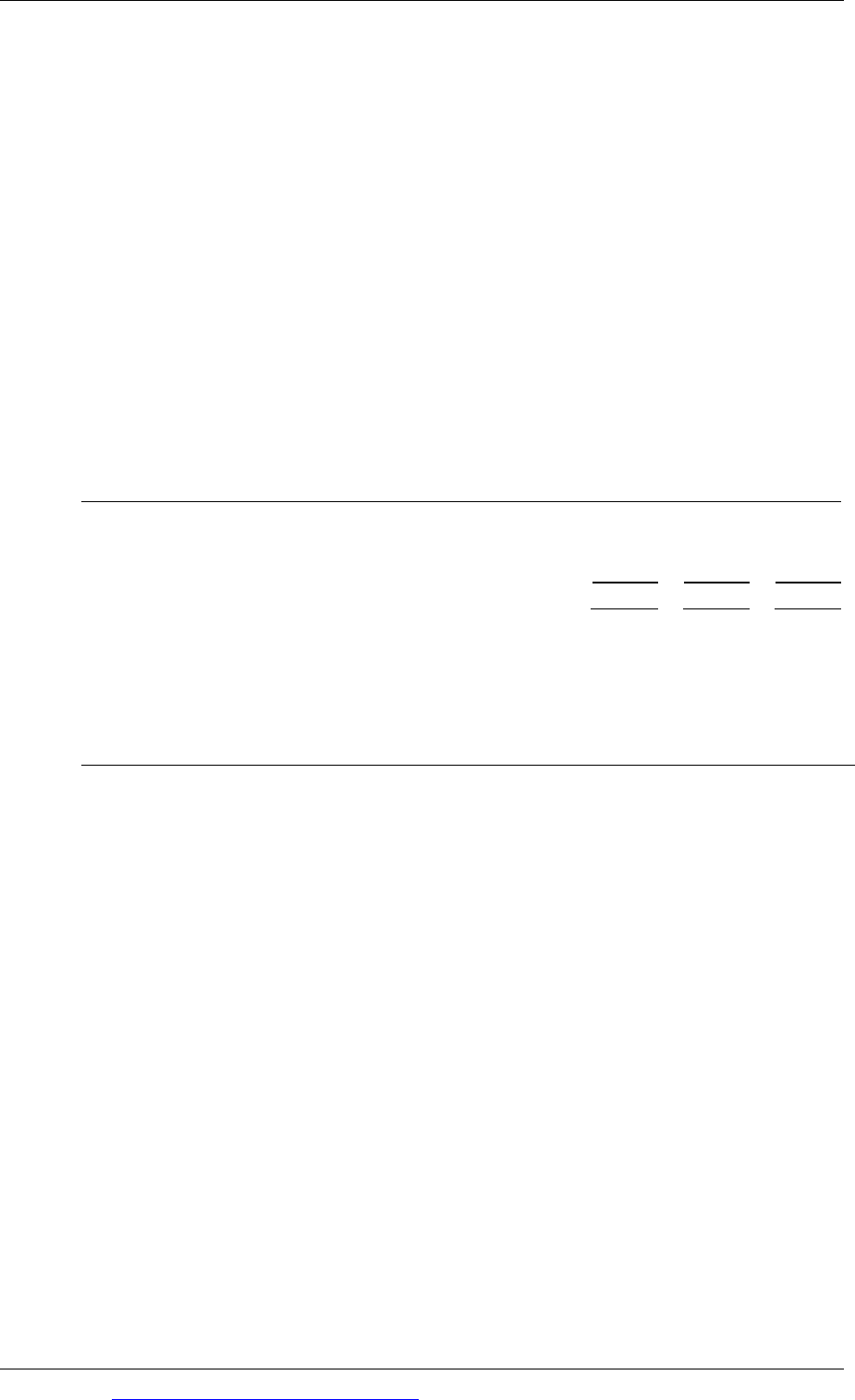
Paper P2 INT: Corporate Reporting
474 Go to www.emilewoolfpublishing.com for Q/As, Notes & Study Guides © EWP
Step 2: Calculate the proportion of the work completed to date using either the costs
basis or the sales basis. An examination question will indicate which basis to use.
Step 3: The figures to include in profit or loss are normally calculated in the
following order:
first, a figure for revenue, and
next, the figure for profit.
Costs are then a balancing figure, equal to the difference between revenue and
profit (or loss).
For a long-term contract, figures are calculated first of all for total revenue, total
profit and total costs to date. The revenue, profit and costs for the current financial
period are then calculated as the difference between:
the total revenue, profit and costs to date, and
the total revenue, profit and costs as at the end of the previous financial period.
Year 1
Year 2 Year 3
$ $ $
Cumulative profit to year end X X X
Minus: Amounts taken to profit in previous years - (X) (X)
Profit this year (balancing figure) X X X
Summary: possible situations
The following table outlines the possible revenue and cost measurement principles:
Situation Revenue measurement Cost measurement
Profitable Stage (%) of completion Stage (%) of completion
Expected loss Stage (%) of completion Balancing figure to capture the full loss
Uncertain Revenue to equal costs Costs incurred in the period
2.4 IAS 11: Disclosure requirements
IAS 11 requires disclosure of the following information about construction contracts:
The amount of contract revenue recognised as revenue in the period.
The methods used to determine the amount of revenue and the stage of
completion of contracts in progress (for example, the costs basis)
For each contract in progress at the end of the reporting period, the total costs
incurred and profits recognised (net of any losses recognised) to date
In relation to the statement of financial; position, IAS 11 requires disclosure of the
following items:
The amount of advances received (amounts received from customers before the
related work has been carried out).
The amount of retentions (amounts not paid by the customer until the contract is
completed to his satisfaction).
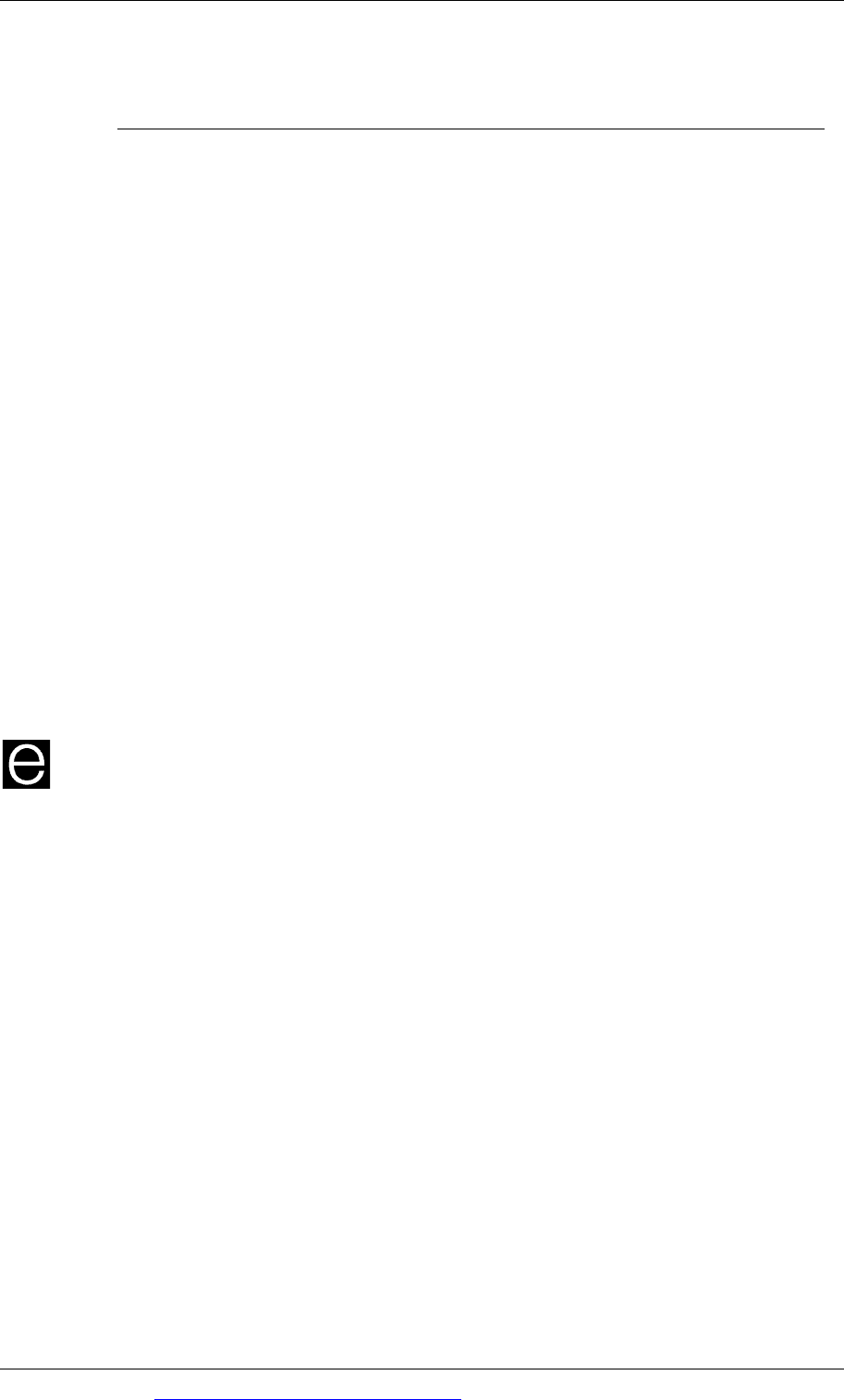
Chapter 18: Other accounting standards
© EWP Go to www.emilewoolfpublishing.com for Q/As, Notes & Study Guides 475
The gross amount due from customers or the gross amount due to customers for
contract work. This is calculated as follows:
$ $
Costs incurred X X
Plus recognised profits to date/(or minus recognised losses) X/(X) X/(X)
Minus progress billings (X) (X)
–
–––
= Inventories: Due from customers on contracts
X
––––
Non-current liabilities: Due to customers on contracts
––––
(X)
–
–––
(Note: ‘Progress billings’ are the amounts that the customer has been invoiced
already, during the progress of the contract to date.)
Note the calculations carefully: (1) Costs incurred (2) plus profits taken to date (3)
minus amounts billed to the customer (4) equals inventory in the statement of
financial position.
Receivables may also include amounts recoverable on contracts where progress
billings exceed cash received from the customer. This amount may include
retentions, disclosed above. For example, if progress billings have been $3 million
but the customer has paid only $2.5 million of the amounts billed, there will be a
receivable for $0.5 million in the statement of financial position, for ‘amounts
recoverable on contracts’.
Example
A construction contractor has a fixed price contract for $9,000 to build a bridge. The
initial amount of revenue agreed in the contract is $9,000. The contractor’s initial
estimate of contract costs is $8,000. It will take three years to build the bridge.
By the end of year 1, costs incurred were $2,093 and the anticipated costs to
complete the project were $5,957.
In year 2, costs incurred to date were $6,168 and the estimated total costs had risen
to $8,200. As a result the customer approves a variation in the contract revenue to
cover the over-run on costs (the excess costs above the original estimate). This
results in an increase in contract revenue of $200.
At the end of year 2, costs incurred include $100 for standard material stored at the
site. This material will be used in year 3 to complete the project.
The contract is completed in year 3, and the final costs incurred were $8,200.
Payments were made in stages. An advance payment of $2,500 was made at the start
of year 1. A progress payment of $4,000 was made in Year 2. The final payment
(including the $200 variation) was made at the end of year 3.

Paper P2 INT: Corporate Reporting
476 Go to www.emilewoolfpublishing.com for Q/As, Notes & Study Guides © EWP
The contractor determines the stage of completion of the contract by calculating the
proportion that the contract costs incurred for work performed to date bear to the
latest estimated total contract costs:
Stage of completion % = (Contract costs incurred to date/Estimated total contract
costs) × 100%.
Required
(a) Calculate the revenue, costs and profit to recognise in profit or loss in each
year
(b) Calculate the amounts to be disclosed in the statement of financial position at
the end of each year.
Answer
(a) Profit or loss
Key data provided in question
Year1 Year2 Year3
$ $ $
Initialrevenueagreedinthecontract 9,000 9,000 9,000
Variation
‐ 200 200
––––––––––––– ––––––––––––– –––––––––––––
Totalcontractrevenue 9,000 9,200 9,200
–
––––––––––––
–––––––––––––
–––––––––––––
Costsincurredtodate 2,093 6,168 8,200
AnticipatedcoststocompleteYear1
(8,050–2,093):Year2(8,200–6,168)
5,957 2,032 0
––––––––––––– ––––––––––––– –––––––––––––
Totalestimatedcosts 8,050 8,200 8,200
–
––––––––––––
–––––––––––––
–––––––––––––
Estimatedprofit(revenuelesscosts) 950 1,000 1,000
Stage 1: Calculate the attributable revenue
Revenue is recognised according to the percentage completion which is based
on costs incurred to date as a percentage of total estimated costs.
Year1 Year2 Year3
$ $ $
Costsincurredtodate 2,093 6,068 8,200
Totalestimatedcosts
8,050 8,200 8,200
Stageofcompletion(note)
26% 74% 100%
Attributablerevenuetodate
(%completion×totalrevenue)
(26%×9,000) (74%×9,200)
2,340 6,808 9,200
Minus:revenuerecognisedtodate
‐ 2,340 6,808
––––––––––––––––– ––––––––––––––––– –––––––––––––––––
Revenuefortheyear 2,340 4,468 2,392
––––––––––––––––– ––––––––––––––––– –––––––––––––––––
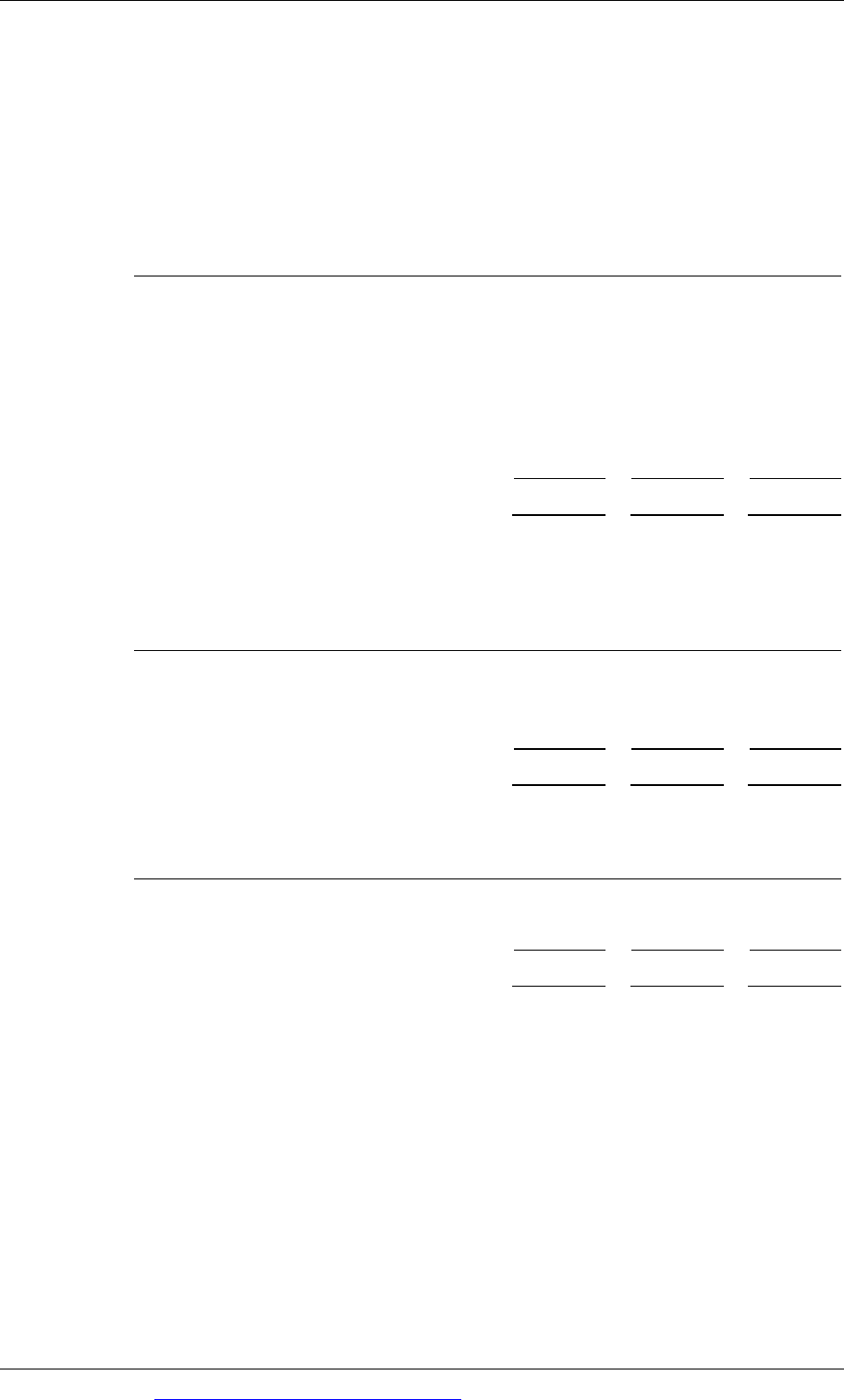
Chapter 18: Other accounting standards
© EWP Go to www.emilewoolfpublishing.com for Q/As, Notes & Study Guides 477
Note: The percentage completion in year 2 is based on costs incurred to date
of $6,168 less the $100 of inventory carried forward to year 3.
Stage 2: Calculate the attributable profit
If the project is expected to be profitable, profit will be recognised according to
the stage of completion. If the project is expected to be loss-making, the loss
must be recognised in full.
Year1
Year2
Year3
Stageofcompletion
26%
74%
100%
Estimatedprofit(seeKeydata) 950
1,000
1,000
Cumulativeattributableprofittodate
(%completion×estimatedprofit)
247
740
1,000
MInus:profitrecognisedtodate
‐
247
740
Profitfortheyear
247
493
260
Stage 3: Determine cost of sales
Cost of sales will be the costs charged to the contract in the year
Year1
Year2
Year3
Costsincurredtodate
(excludinginventoryinYear2)
2,093
6,068
8,200
Minus:Costsrecognisedtodate ‐
2,093
6,068
Costofsalesfortheyear
2,093
3,975
2,132
Extract from the statement of comprehensive income (or income statement)
Year1
Year2
Year3
Revenuefortheyear
2,340
4,468
2,392
Costofsalesfortheyear 2,093
3,975
2,132
Profitfortheyear
247
493
260
(b) Statement of financial position disclosures
The gross amount due from or to customers will be recognised as an asset or
liability in the statement of financial position. The amount due comprises:
costs incurred
plus recognised profits or minus recognised losses
minus amounts billed to customers.
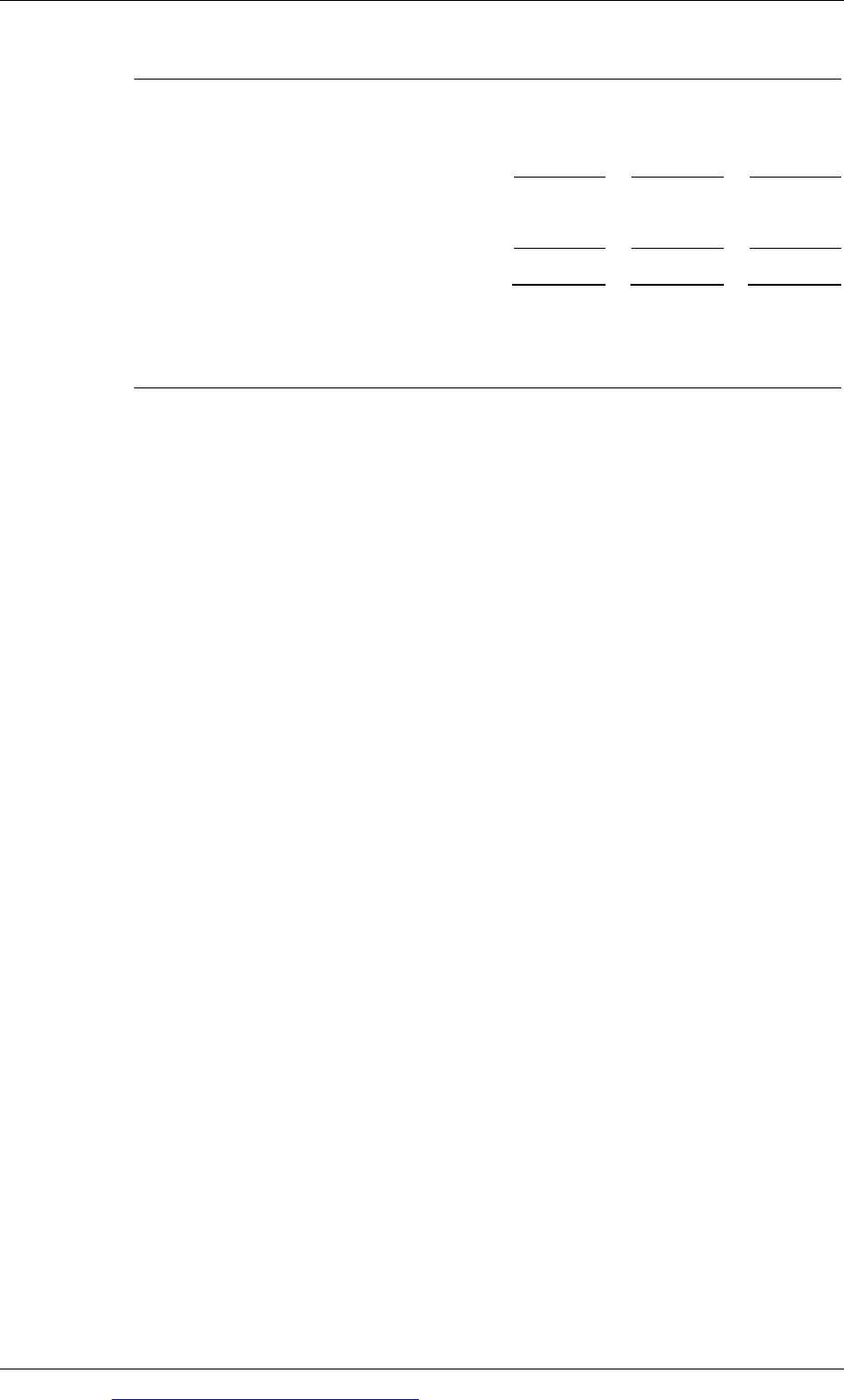
Paper P2 INT: Corporate Reporting
478 Go to www.emilewoolfpublishing.com for Q/As, Notes & Study Guides © EWP
Year1
Year2
Year3
Costsincurredtodate
(excludinginventoryinYear2)
2,093
6,068
8,200
Plus:Profitrecognisedtodate 247
740
1,000
2,340
6,808
9,200
Minus:Cumulativeamountsbilled 2,500
6,500
9,200
Asset/(Liability)
(160)
308
0
Extract from the statement of financial position
Year1 Year2 Year3
Currentassets
Grossamountsduefromcustomers
308
Inventoriesofrawmaterials
100
Currentliabilities
Grossamountsduetocustomers 160
2.5 IFRIC Interpretation 12: Service concession arrangements
In many countries, organisations in the public sector (state sector) are responsible
for infrastructure projects for public services - such as roads, bridges, tunnels,
prisons, hospitals, airports, water distribution facilities, energy supply and
telecommunication networks.
However in some countries, the government enters into contracts with companies or
other private sector entities for the development, financing, operation and
maintenance of infrastructure. The infrastructure may already exist, or it may be
constructed during the period of the service arrangement.
These arrangements are covered by IFRIC Interpretation 12. Arrangements within
the scope of IFRIC Interpretation 12 typically involve a private sector entity (an
operator):
constructing an item of infrastructure for the public service, such as a state
hospital
upgrading it (for example, by increasing its capacity), and
operating and maintaining it for a specified period of time.
A feature of these arrangements is the public service nature of the obligation that is
undertaken by the operator. The service arrangement contractually obliges the
operator to provide the services to the public on behalf of the government.
IFRIC 12 provides guidance on accounting by operators for these types of
concession agreements.

Chapter 18: Other accounting standards
© EWP Go to www.emilewoolfpublishing.com for Q/As, Notes & Study Guides 479
Accounting treatment
The operator should recognise and measure revenue from the contract in
accordance with IASs 11 and 18 for the services it performs.
If the operator performs more than one service (i.e. construction or upgrade
services and operation services) under a single contract, the consideration for
each service should be allocated by reference to the relative fair values of the
services delivered.
If the operator provides construction or upgrade services the consideration
received or receivable by the operator shall be recognised at its fair value.
The operator shall recognise a financial asset (under IAS 32, 39 and IFRS 7) to the
extent that it has an unconditional contractual right to receive cash or another
financial asset from the customer
The operator should recognise an intangible asset (under IAS 38) to the extent that it
receives a right (e.g. a licence) to charge users for their use of the public service. A
right to charge users of the public service is not an unconditional right to receive
cash because the amounts are contingent on the extent that the public uses the
service
The operator should account for revenue and costs relating to operation services in
accordance with IAS 18.
The operator may have contractual obligations it must fulfil as a condition of its
licence:
to maintain the infrastructure to a specified level or standard
to restore the infrastructure to a specified condition before it is handed over to
the customer (government) at the end of the service arrangement.
These contractual obligations to maintain or restore infrastructure should be
recognised and measured in accordance with IAS 37, at the best estimate of the
expenditure that would be required to settle the present obligation as at the end of
the reporting period.
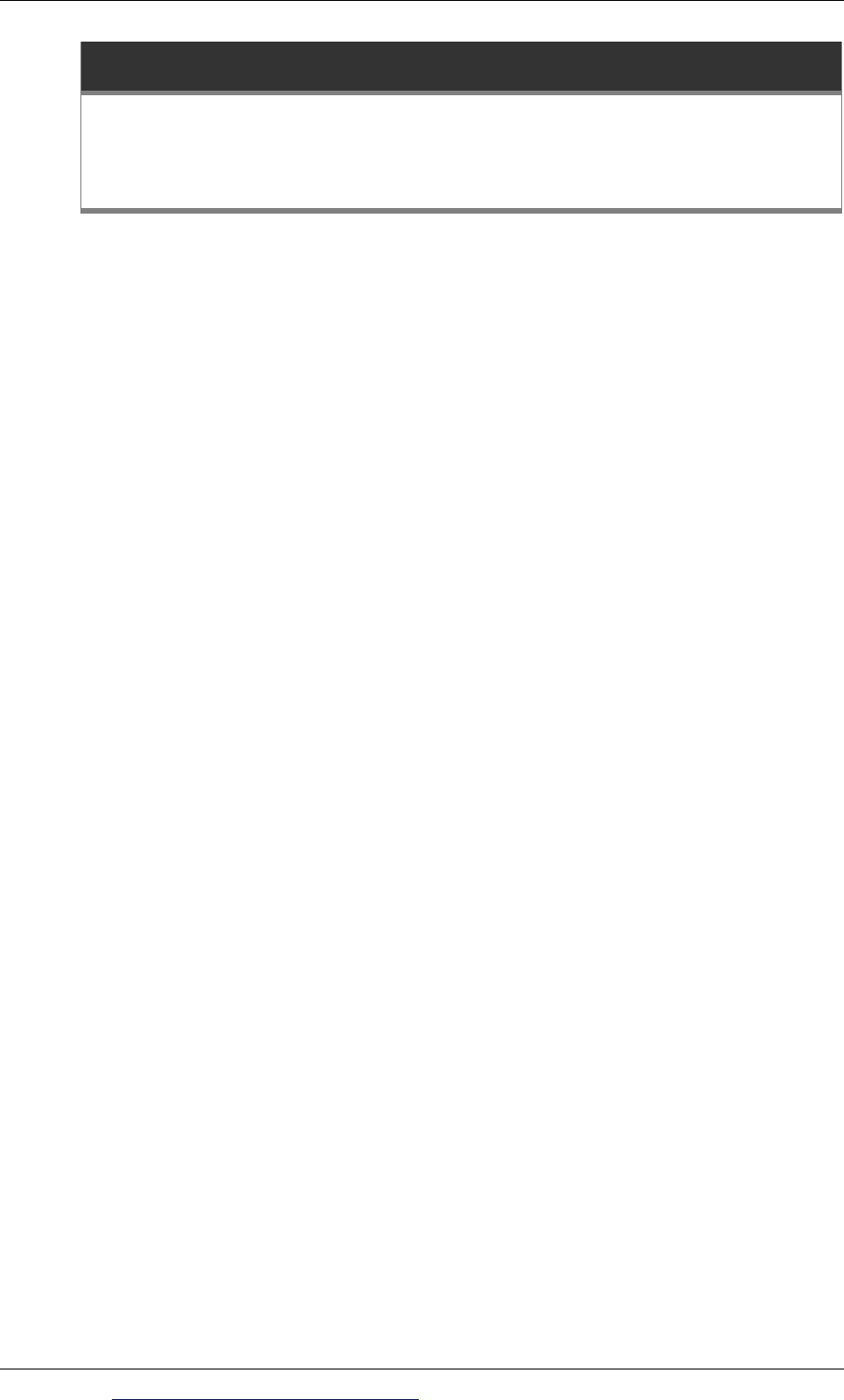
Paper P2 INT: Corporate Reporting
480 Go to www.emilewoolfpublishing.com for Q/As, Notes & Study Guides © EWP
IAS 41:
Agriculture
Scope and definitions
Accounting treatment
Government grants
3 IAS 41: Agriculture
3.1 Scope and definitions
Scope
IAS 41: Agriculture covers the following agricultural activities:
biological assets
agricultural produce at the point of harvest, and
government grants for agriculture (in certain situations).
IAS 41 does not apply to:
the harvested agricultural product (IAS 2 Inventory applies)
land relating to the agricultural activity (IAS 16 or IAS 40 applies)
intangible assets related to agricultural activity (IAS 38 Intangible assets applies).
Definitions
The following definitions are relevant to IAS 41:
Biological asset – a living animal or plant, such as sheep, cows, rice, wheat,
potatoes and so on.
Biological transformation means the processes of growth, production,
degeneration and procreation that cause changes in the quality or the quantity of a
biological asset
Agricultural activities – the management by an entity of the biological
transformation of biological assets
− for sale, or
− into agricultural produce, or
− into additional biological assets.
Agricultural produce is the harvested product of the entity’s biological assets.
Harvest – the detachment of produce from a biological asset or the cessation of a
biological asset’s life.
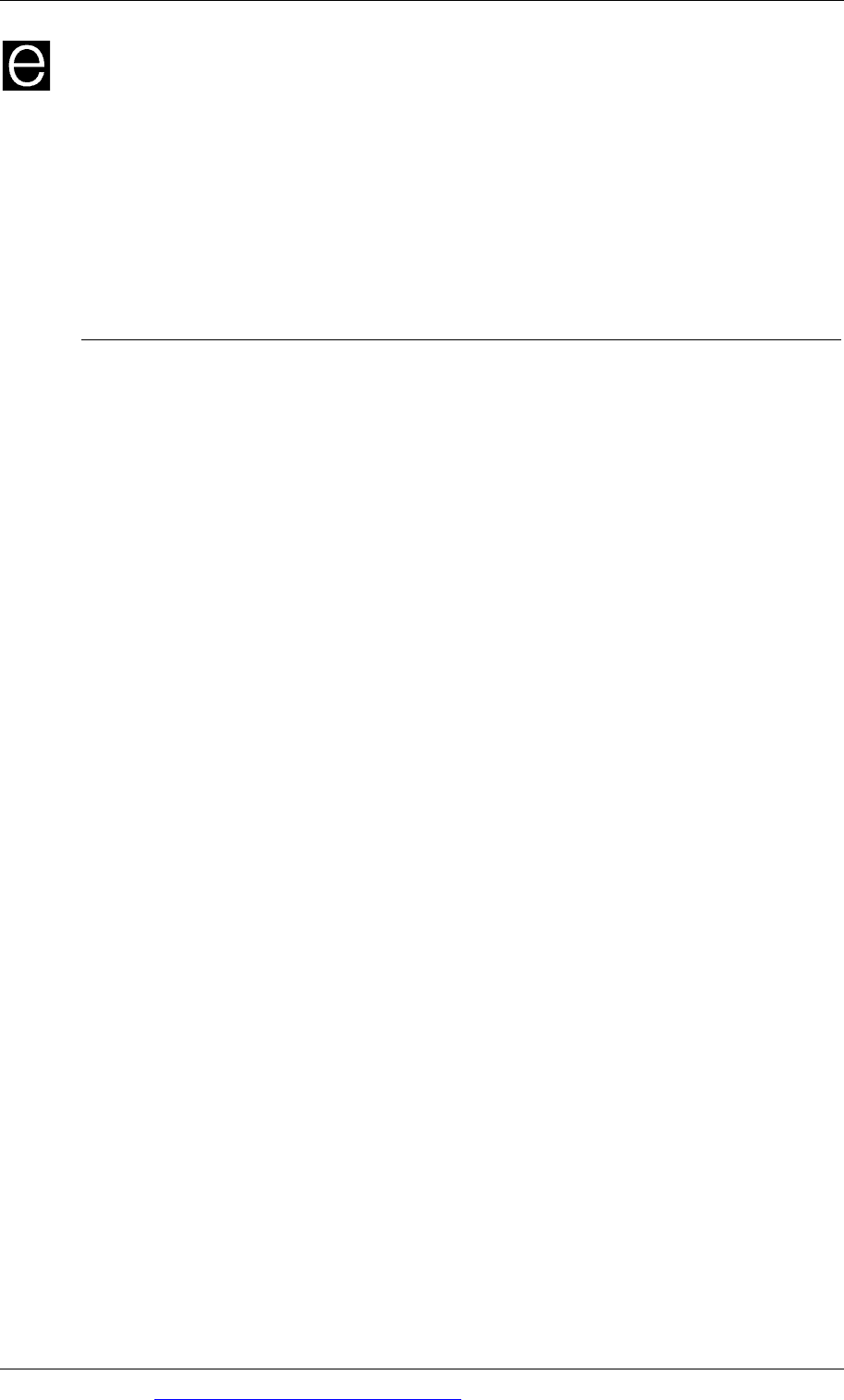
Chapter 18: Other accounting standards
© EWP Go to www.emilewoolfpublishing.com for Q/As, Notes & Study Guides 481
Example
A farmer has a field of lambs (‘biological assets’). As the lambs grow they go
through biological transformation. As sheep they are able to procreate and lambs
will be born (additional biological assets) and the wool from the sheep provides a
source of revenue for the farmer (‘agricultural produce’). Once the wool has been
sheared from the sheep (‘harvested’), IAS 2 requires that it be accounted for as
regular inventory.
Further examples
Biologicalassets
Agriculturalproduce Harvestedproducts
Treesinaplantationforest Logs Lumber
Plants Harvestedcane Sugar
Dairycattle Milk Cheese
Vines Grapes Wine
Bushes Leaf Teaortobacco
3.2 Accounting treatment
Recognition of a biological asset or agricultural produce
An entity should recognise a biological asset or agricultural produce when (and
only when):
the entity controls the asset as a result of past events
it is probable that future benefits will flow from the asset to the entity, and
the fair value or cost of the asset can be measured reliably.
(Note: the probability of future benefits can be an important factor in the recognition
of these items.)
Measurement
A biological asset should be measured initially and subsequently at the end of
each reporting period at its fair value minus ultimate selling costs (unless the
fair value cannot be measured reliably). The gain or loss arising on initial
recognition and subsequent revaluation should be included in profit or loss for
the period in which it arises.
Agricultural produce harvested from an entity’s biological assets is measured at
its fair value minus estimated ultimate selling costs. The gain or loss on initial
recognition is included in the profit or loss for that period.
Ultimate selling costs include commissions to brokers and dealers, levies to
regulators, transfer taxes and duties.
Fair value is the quoted price in an active market. It is presumed that fair values
can be measured reliably for biological assets. If this is not so, the biological asset
should be measured at its cost minus any accumulated depreciation or
impairment.
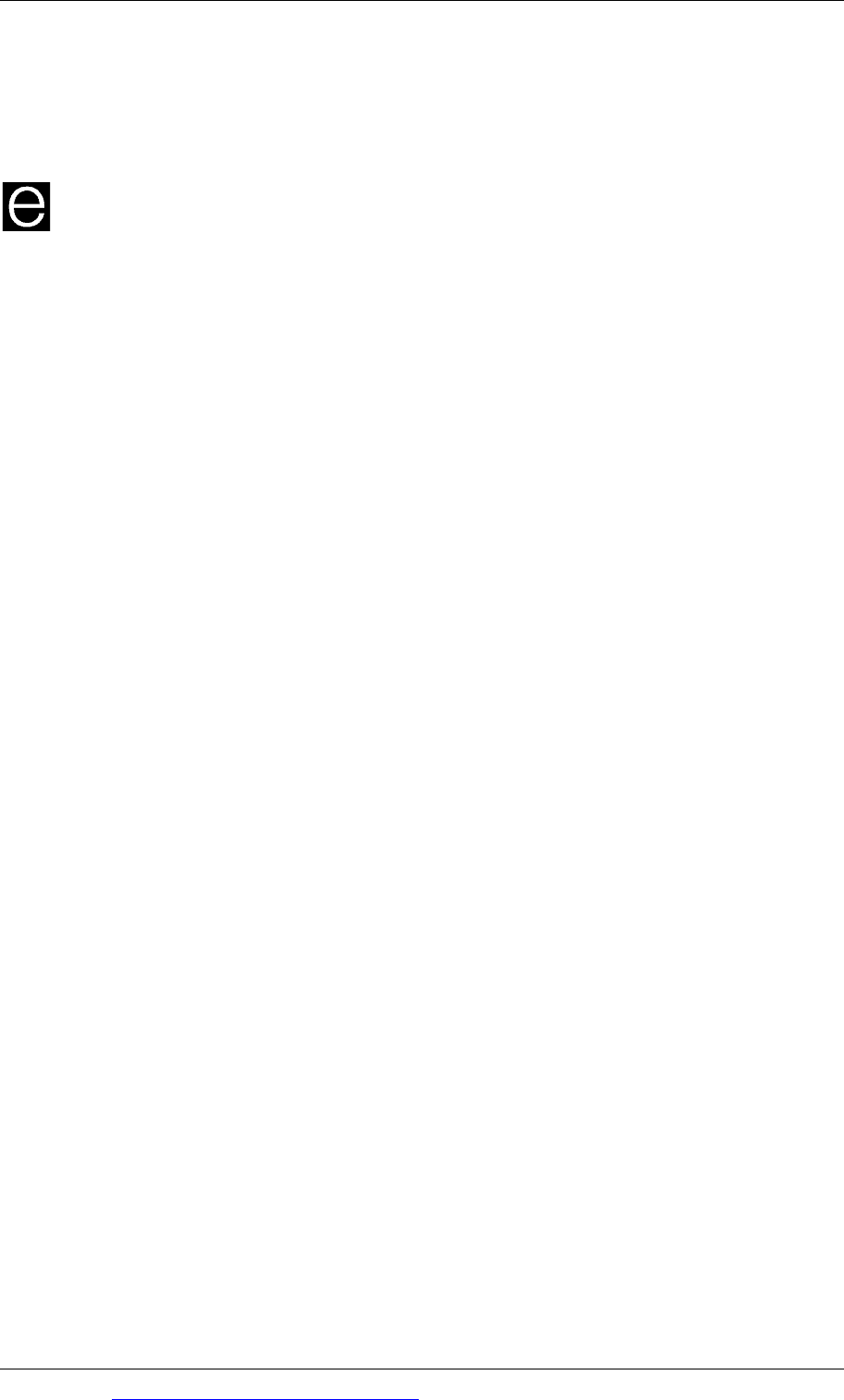
Paper P2 INT: Corporate Reporting
482 Go to www.emilewoolfpublishing.com for Q/As, Notes & Study Guides © EWP
Once the fair value becomes available, the entity should measure the asset at fair
value minus ultimate selling costs. This could arise where a vineyard owner
buys some vines that have no value until they are several years old and start to
produce grapes.
Example
Using the earlier example of a sheep farmer, lambs should initially be measured
when they are born at their fair value minus costs to sell.
As they grow and their value changes, this gain or loss should be reflected in the
biological asset value and also in profit or loss.
The sheep may be used for obtaining wool. Once the wool has been sheared from
the sheep, as an agricultural produce the wool should be valued at fair value minus
costs to sell.
If the wool is then turned into yarn or carpet its value is then transferred to
inventory and IAS 2 will provide any further accounting rules.
3.3 Government grants
Agricultural entities (for example, farms) often benefit from government grants in
the form of cash payments. An unconditional grant relating to a biological asset that
is being measured at fair value should be recognised as income when the grant
becomes receivable.
A grant may be dependent on certain conditions being met. For example, the entity
may be asked not to engage in a specific agricultural activity. In such cases, the
grant should be recognised only when the conditions are met.
If the biological asset has been measured at cost because fair value could not be
measured reliably, then the requirements of IAS 20: Accounting for government grants
should be applied.
